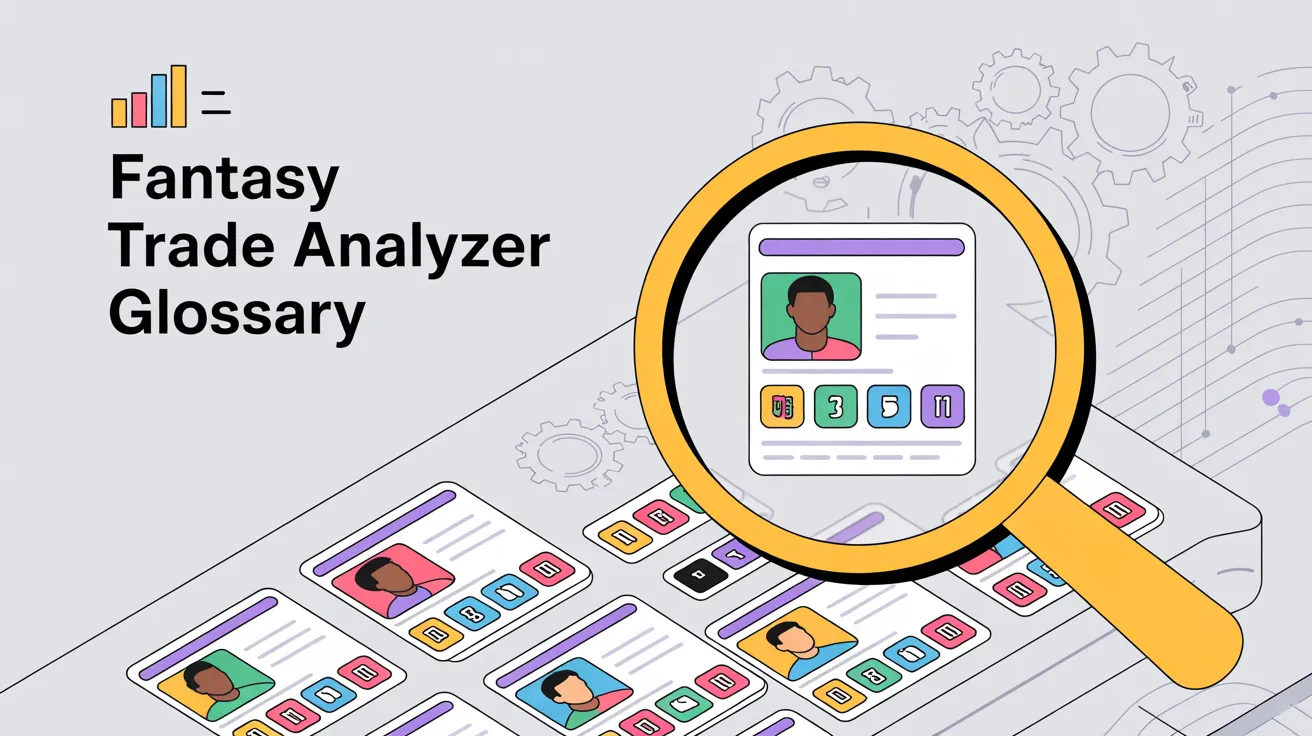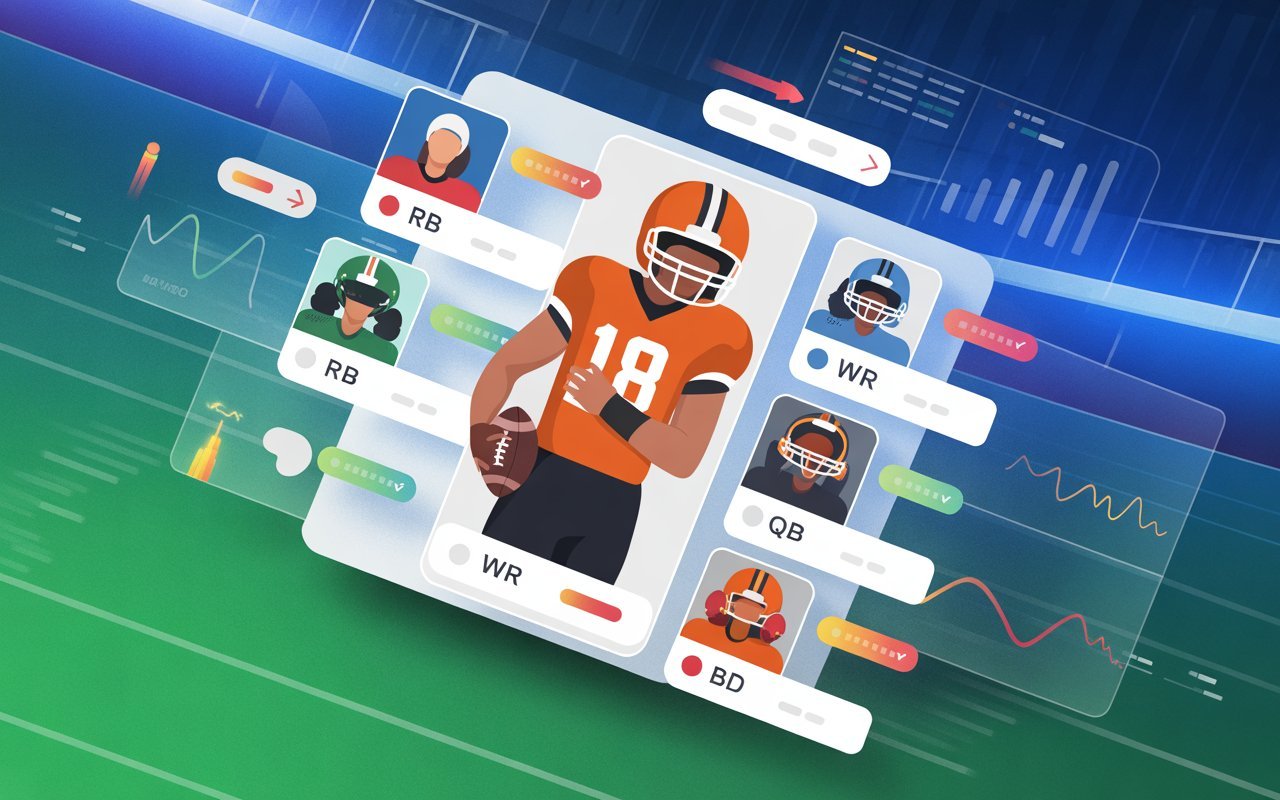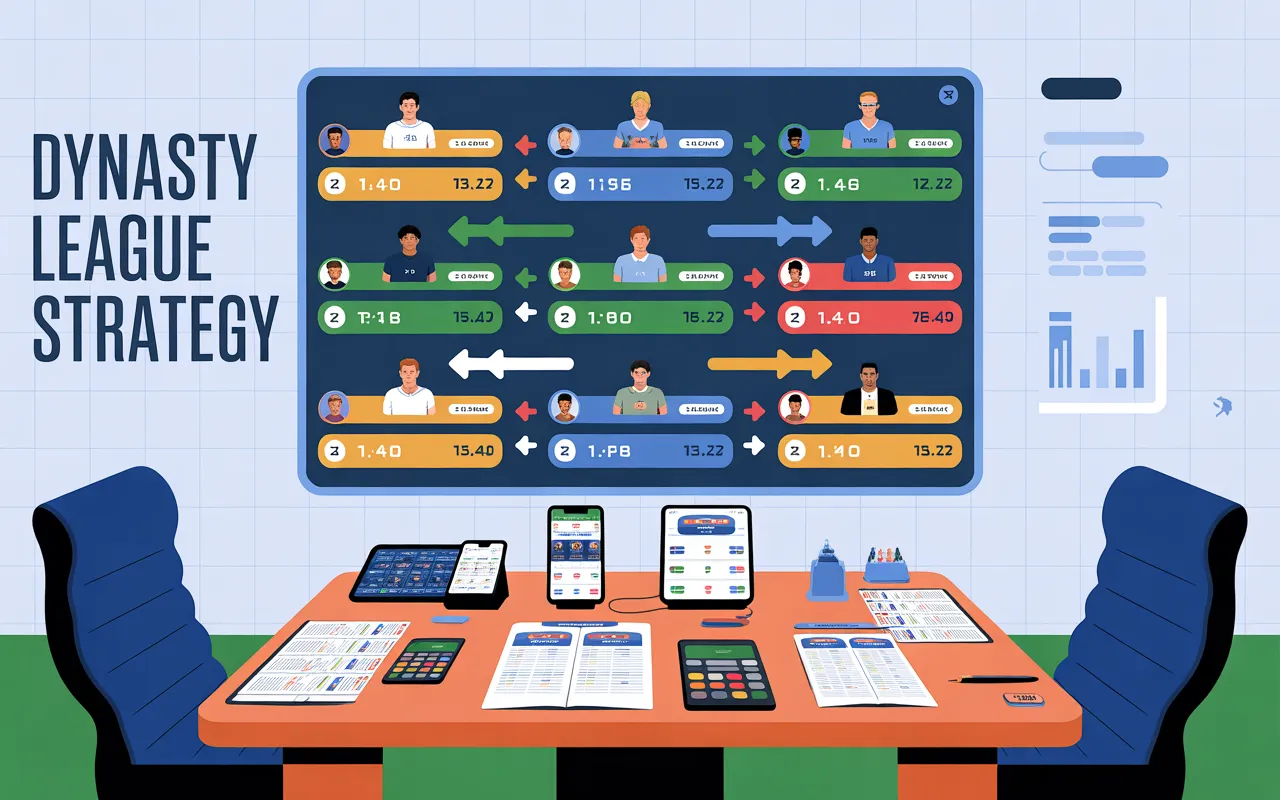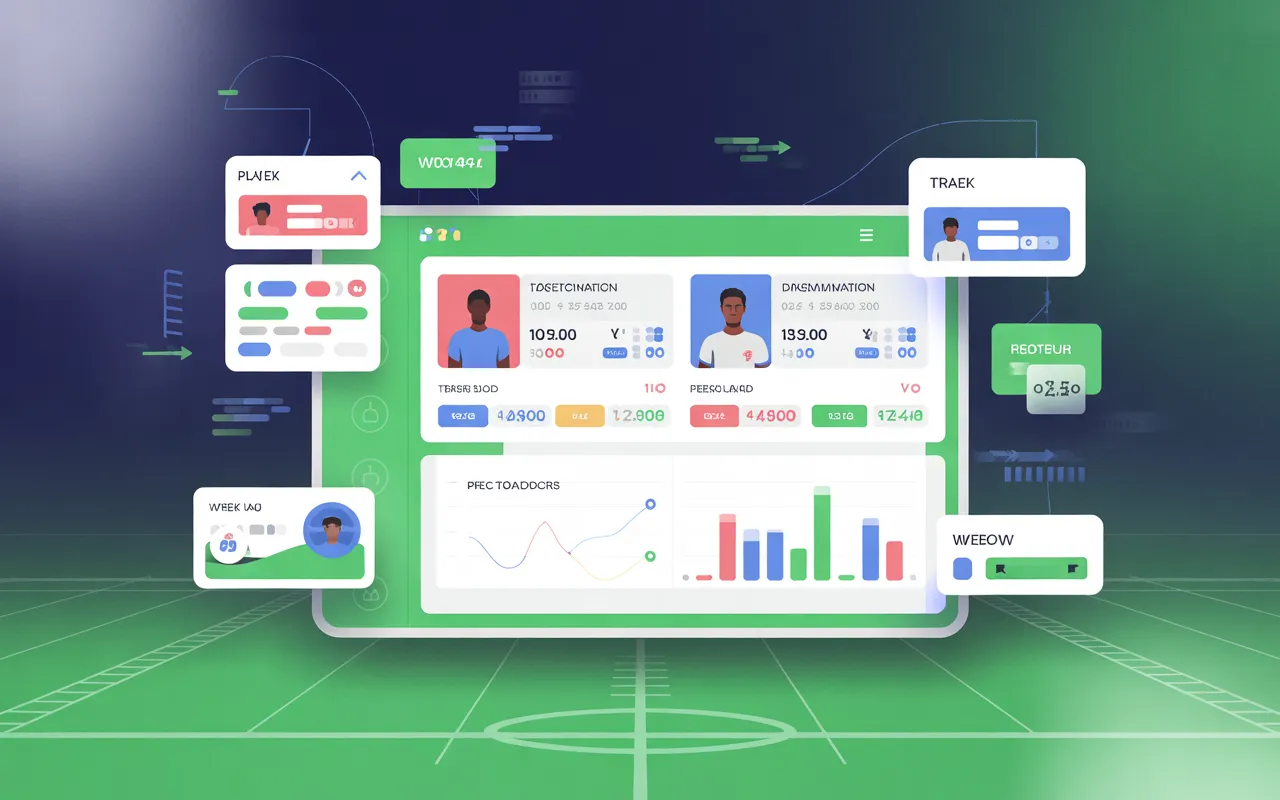Every fantasy football trade decision comes down to one question: Are you getting fair value? That’s where a Fantasy trade analyzer glossary becomes essential.
Think about it, millions of fantasy football trades happen each season. Yet most managers don’t fully understand the terms analysts and tools use when calculating trade value charts, fair trade rating, or buy low sell high strategies. Without that knowledge, you risk overpaying, undervaluing your roster, or missing an opportunity to make a league-winning move.
This guide breaks down the most important fantasy football trade analyzer terms. You’ll learn how concepts like positional scarcity, ROS projections, and value over replacement fantasy football (VOR) directly impact your decisions. Whether you play in redraft leagues, dynasty football, or superflex league formats, mastering this glossary will help you negotiate smarter and win trades in 2025 and beyond.
1. Trade bait meaning fantasy football
- Definition: A player placed on your trade block to attract offers.
- Example: An overperforming WR3 can be trade bait if you need a RB.
- Angle: Compare to sell high strategies. Trade bait is about signaling availability, not always selling at peak.
2. Positional scarcity fantasy trade term
- Definition: The limited supply of elite players at certain positions.
- Impact: RBs often carry higher value than WRs in PPR or standard scoring leagues.
- Content Angle: Explain why elite TE or QB in a superflex league can swing trades.
3. Buy low sell high in fantasy football explained
- Definition: Trading for underperforming stars (buy low) or moving overperformers at peak (sell high).
- Scenario: Trading for a slumping Lamar Jackson after two poor weeks.
- Benefit: Maximizes long term value of your roster.
4. Fair trade percentage vs trade value chart
- Fair trade percentage: Tool-driven metric measuring fairness.
- Trade value chart: Analyst rankings assigning points to players/picks.
- Angle: Show managers why both are useful but not identical.
- Definition: A backup RB who would gain starter value if the lead RB is injured.
- Example: Jamaal Williams as a handcuff to Alvin Kamara.
- Angle: Why handcuffs are underrated in trade analyzer ratings.
6. Redraft vs dynasty trade value terms
- Redraft: Short-term player performance (one season).
- Dynasty: Long-term rookie premium and future performance matter.
- Angle: Compare glossary terms across formats.
7. ROS projections fantasy football gloss terms
- Definition: “Rest of Season” projections forecast future points.
- Impact: ROS projections affect trade values more than past stats.
- Example: Trading an injured WR with high ROS upside.
8. Fair trade rating fantasy football
- Definition: Score showing trade balance.
- Thresholds: 50–60 = fair; 70+ = winning side.
- Angle: Explain how analyzers generate personalized breakdowns.
9. Trade value chart methodology fantasy football
- Definition: Explains how charts are built (usage, snap share, scoring settings).
- Transparency: Good analyzers reveal formulas.
- Angle: Educate readers on next generation trade analysis.
10. League settings impact on trade value
- Definition: Scoring rules and roster size change everything.
- Examples: TE premium, .5PPR, superflex league.
- Angle: Show why context matters more than raw points.
- Definition: Trading into overlapping bye weeks reduces short-term lineup strength.
- Angle: Teach readers how to avoid “bye week traps.”
12. Advantage metric fantasy trade term
- Definition: A score measuring how much better your starter is vs opponents.
- Example: RB1 with +5 advantage metric over league average.
- Angle: Why this is key for championship season planning.
13. Overpaid fantasy trade warning signs
- Definition: Red flags showing you’re giving too much.
- Signs: Losing value over replacement, creating roster holes.
- Angle: Add a “red flag” checklist.
14. Target share vs snap share trade value
- Target share: Passing volume.
- Snap share: Playtime percentage.
- Impact: Both matter, but target share is more predictive.
- Angle: Use side-by-side ranking list examples.
15. Diminishing returns in fantasy roster value
- Definition: Depth beyond the starting lineup adds less value.
- Angle: Trading a bench RB for a starting WR is usually smart.
16. Rookie premium fantasy trade term
- Definition: Extra value assigned to rookies in dynasty football.
- Angle: Explain why rookie hype inflates trade analyzer ratings.
17. Schedule strength vs strength of schedule term
- Schedule strength: Team-based.
- Strength of schedule: Player positional difficulty.
- Angle: Clarify confusion and show trade application.
18. Risk adjusted projections in fantasy trades
- Definition: Projections weighted by injury/suspension risk.
- Angle: Show how injury history affects trades.
19. Replacement level player fantasy term
- Definition: The baseline free-agent/waiver option.
- Angle: Helps measure true trade gain/loss.
20. Value over replacement fantasy football (VOR)
- Definition: Player’s value compared to replacement level.
- Angle: Core concept behind all trade calculator tools.
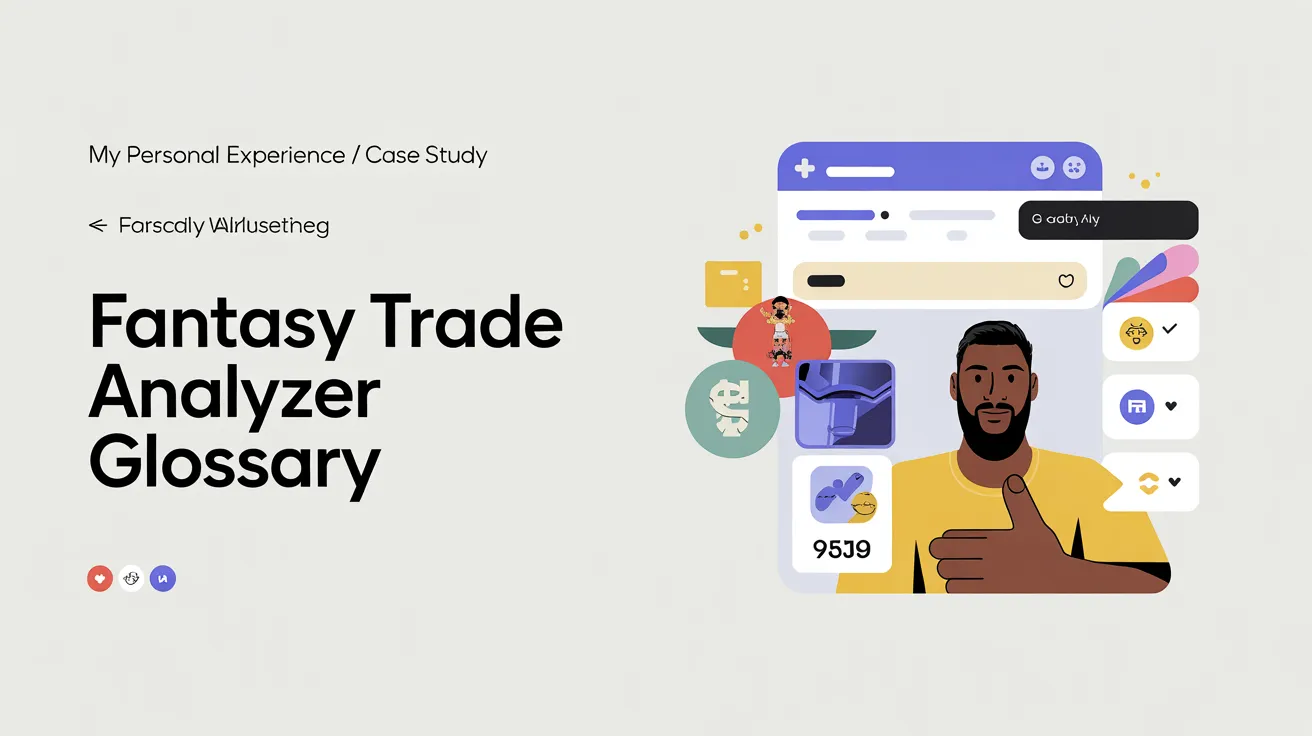
My Personal Experience / Case Study
When I first used a trade analyzer, I ignored bye week risk. I traded for two WRs who both sat Week 9. That mistake cost me a matchup and eventually a playoff spot.
Later, I learned to focus on league settings impact on trade value. In my superflex league, I traded an RB for a QB because positional scarcity made QB far more valuable. That move pushed me to a championship season.
Lesson: Always evaluate context, not just raw numbers. Tools give ratings, but smart owners add strategy.
Expert Quote
According to Matthew Berry (NBC Sports):
“Fantasy football trades aren’t about winning today. They’re about building a roster that can win in Week 16.”
Real Example
A manager in a 12-team PPR dynasty league traded Jonathan Taylor for two rookie picks and a WR. By applying VOR and ROS projections, he gained long-term depth and avoided overpaying for one star.
Stat for Authority
A 2024 FantasyPros study found that 67% of fantasy champions made at least one mid-season trade.
Conclusion About Fantasy trade analyzer glossary
Mastering the Fantasy trade analyzer glossary terms is the key to winning smarter trades. From trade bait to VOR, each concept gives you an edge.
✅ Recap:
- Learn glossary terms before trading.
- Adjust for league settings.
- Watch for bye week risks and red flags.
📌 Next steps:
- Read our full [Fantasy Trade Strategy Guide].
- Bookmark this glossary for trade season.
- Explore more [tips and tricks] to dominate your league.
FAQs About Fantasy trade analyzer glossary
What is a Fantasy trade analyzer glossary?
It’s a collection of terms like trade bait, fair trade rating, and VOR that explain how trades are evaluated.
How do league settings impact trade value?
Settings like PPR, superflex, and TE premium greatly change player rankings, so trades must be adjusted accordingly.
Is fair trade percentage better than trade value charts?
Both help. Trade value charts give static rankings, while fair trade percentage adapts dynamically to your roster and league.
Why is buy low sell high important in fantasy trades?
It helps you acquire undervalued stars and sell overvalued players, maximizing your roster’s long term value.
What is value over replacement in fantasy football?
VOR measures how much better a player is than the best waiver option, the foundation of all trade evaluation.

